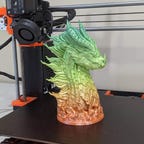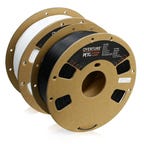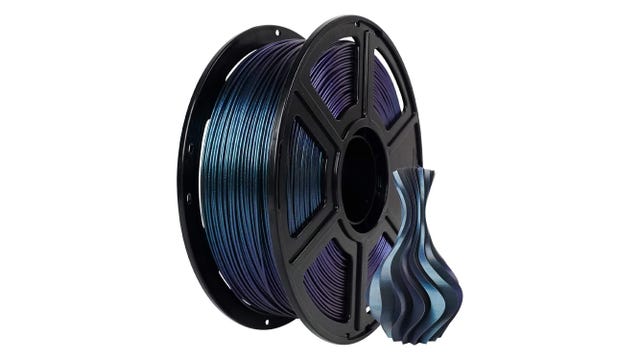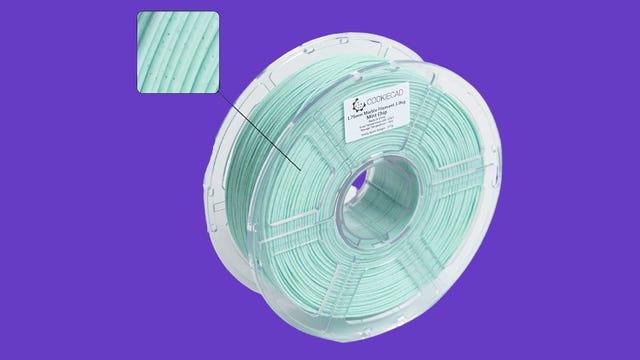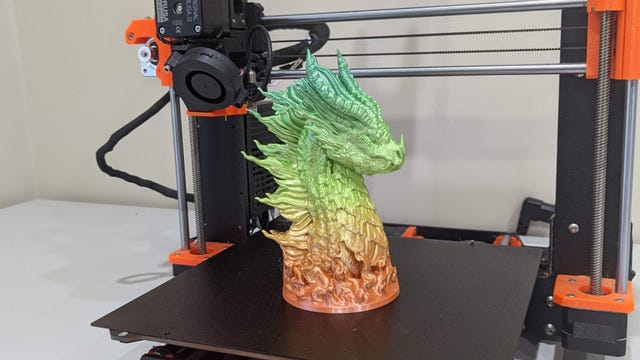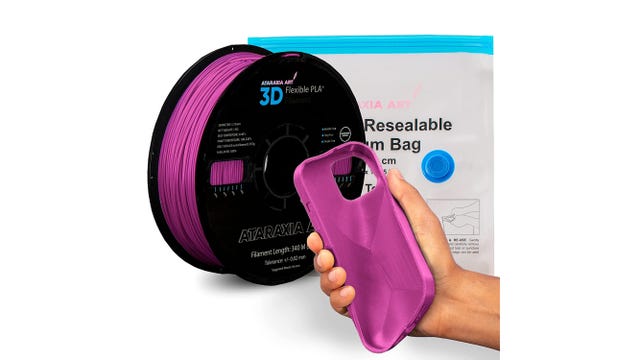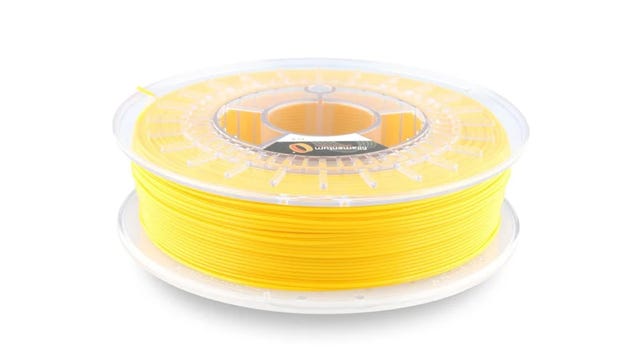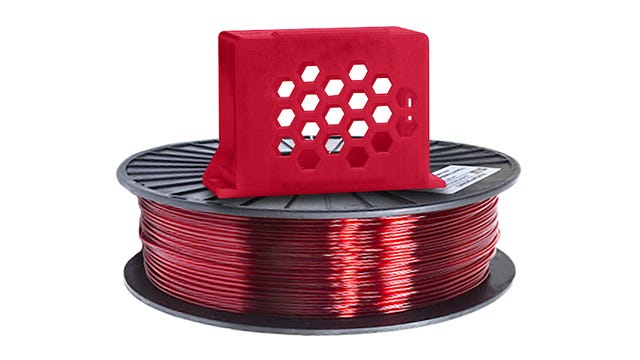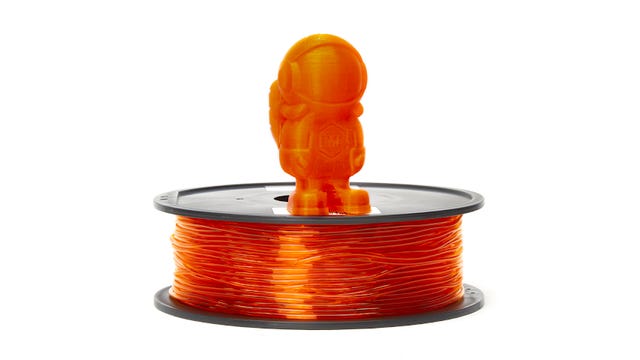Flashforge Burnt Titanium PLA
The best metallic look ever
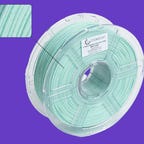
CookieCad Mint chip
It’s ice cream that won’t melt!
You’ve got the best 3D printer you can buy all set up and ready to go, but you can’t get started without some material. If you chose a fused deposition modeling, or FDM, printer — the most common type of 3D printer for hobbyists — you’ll need a few rolls of special plastic.
The material we use for FDM 3D printing is called filament and it’s an easy material to pick up. There are, however, different types of filament, each good for certain projects and terrible for others. You’ll want to make sure you’re using the best filament for the job at hand, or it may fail.
I’ve put together this primer of the different types of filament as well as choices of the best filaments from my favorite brands. This will be updated regularly and contains some great choices for you to start.
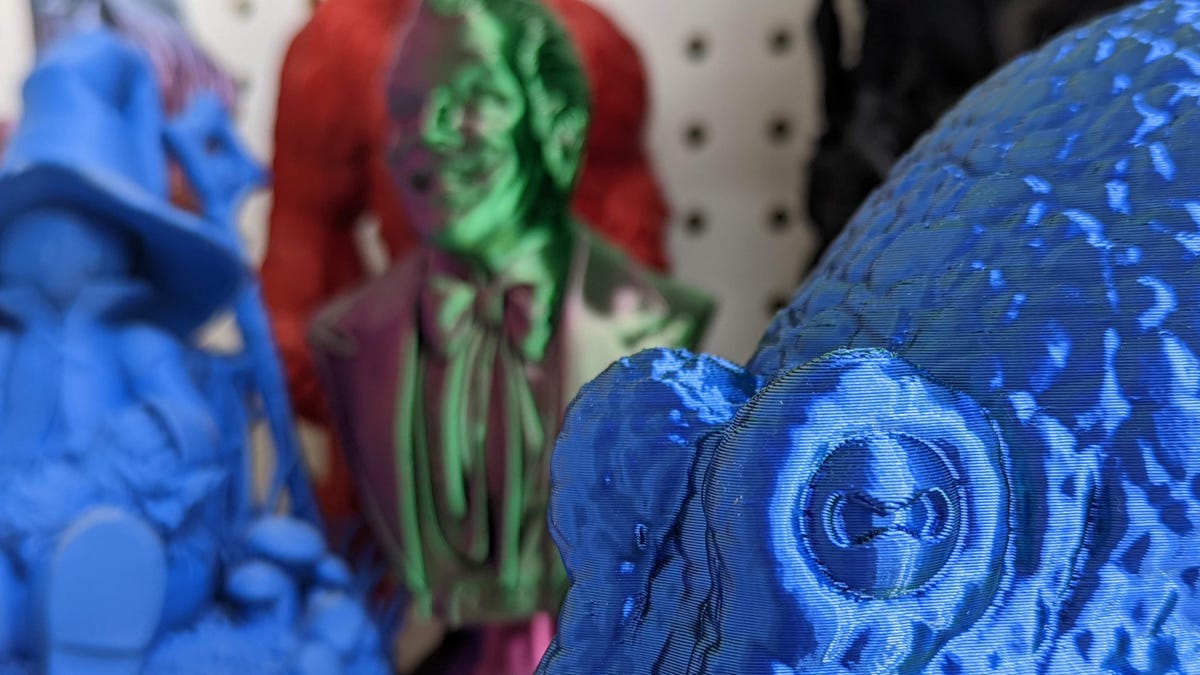
The color of this PLA is hard to describe, but it is beautiful. It has a purple-blue-green hue to it and looks like metal that’s been heated up a lot. Right now it’s probably my favorite-looking filament on my shelf.
It’s also easy to print with, and because of the shifting colors it hides layer lines well. If you’re looking for a dark filament that you aren’t painting over, I’d pick up a few rolls of this today.
You’re receiving price alerts for Flashforge Burnt Titanium PLA
I have been meaning to buy some of this beautiful filament for some time now, and I’m really happy I did. The color is almost exactly the same as Mint choc chip ice cream and the tiny flecks of marble color enhance the look even more. It prints great, with a nice glossy finish, and I found printing it at a higher temperature brings out that gloss really well.
More importantly than the print quality though, I love it for the way it makes me feel. The color just makes me happy and reminds me of days at the beach with my kids. It’s gorgeous.
You’re receiving price alerts for CookieCad Mint chip
Rainbow filament tends to transition between colors very slowly. This means you often get only one or two colors per model. Creality’s latest rainbow filament has a much shorter transition, so you get a much nicer rainbow effect across your models. It looks great on this amazing dragon from Fotis Mint.
You’re receiving price alerts for Creality short transition rainbow PLA
In this article about this flexible PLA I explained how, although this isn’t technically PLA, it does print much easier than TPU, a more common flexible filament. I used it to print an amazing Mandalorian Blacksmith helmet for my 4-year-old. She can’t break it because it’s so bouncy.
This isn’t for newbies, though. It took a lot of trial and error to get the setting for my 3D printer right, and because it is so soft the accuracy can be pretty wonky. But for something that’s different from normal PLA, it is worth checking out.
You’re receiving price alerts for Ataraxia Art
Fillamentum is one of my favorite ABS makers. The colors are always so vibrant, and while it costs a little more than the competition, it keeps that vibrancy even after the model is finished printing. If you’re looking for ABS that you don’t need to paint, Fillamentum is a great place to start.
The Pro series filament from MatterHackers is a much nicer product than a lot of standard PETG. Yes, it costs a little more, but it’s designed to help reduce some of the issues that filament suffers from. It reduces shrinkage, so the part you make is as close to the part you designed as possible. This is a great material for those who make 3D printed models for a living, rather than a hobby.
Thermoplastic polyurethane
TPU is a flexible material that can make cool rubbery models. Most people use it to 3D print phone cases, but more serious modelers often use it to create connectors or flexible hinges to other materials. It can be a difficult material to work with and is best used on a direct-drive 3D printer such as the Prusa Mk3s, rather than a Bowden printer like the Anycubic Vyper. A direct drive printer places the gears to move the filament directly on the print head, while a Bowden setup has them on the frame of the printer.
TPU pros
- Flexible
- Won’t warp in the heat
- Available in fun colors
TPU cons
- Terrible for making solid prints
- Hard to work with on budget printers
MatterHackers Build Series Materials sit in the perfect balance between usability and cost. Yes, I’ve had failures with the Build Series, but once you get it dialed into your printer, you can make dozens of fun, springy models.
I like to use it to make fun toys for my kid’s preschool as they can be thrown around with no fear of breaking into small, sharp pieces.
Filament FAQ
What filament should I start with?
If you’re buying a printer for the first time, the best choice of filament is PLA. It is the easiest to print with, the safest in terms of fumes and the most readily available. Think about laying in a store of PLA when you first start. A 1-kilogram roll feels like a lot, but once you get the itch, materials get eaten up quickly.
Does the filament keep the same color after printing?
Normally yes. If your printer isn’t calibrated well, it could burn the filament, which would discolor it. But normally the color accuracy is pretty close.
A special note on clear plastics: You will not be able to get a completely translucent print with filament. The nature of the printing process makes any clear plastic misty and infill makes it blurry as well. If you are looking to print glass-like models, you will need a resin printer.

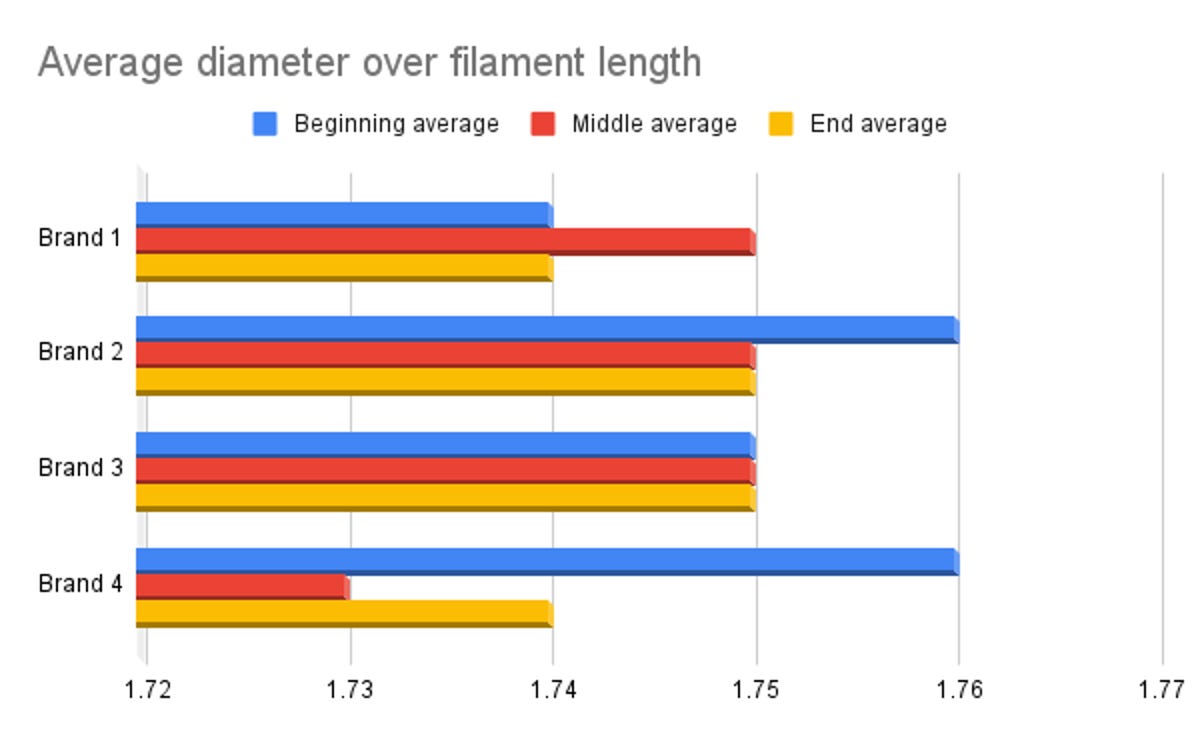
Dimensional accuracy is perhaps the most important test as it measures the consistency of filament. As you move along, the filament changes in diameter will cause the 3D printer to over- or under-extrude filament. This creates noticeable scarring in your model, or worse, complete failure. You want the material to have the same diameter the whole way through.
To measure the accuracy, I take a 5-meter piece of filament from the beginning, middle and end of the roll and measure the diameter at four equally spaced points. I then add all of those measurements up and divide the total by 12 — the total number of measurements taken — to give me an average across the roll. Most modern printers use 1.75mm filament so you want the filament to be as close to that as possible.
Great filament has a variance of +/- 0.02mm, good filament is +/- 0.03mm and rough filament is anything +/- 0.05mm. All of the filaments we have recommended here are at least 0.03mm on average.


